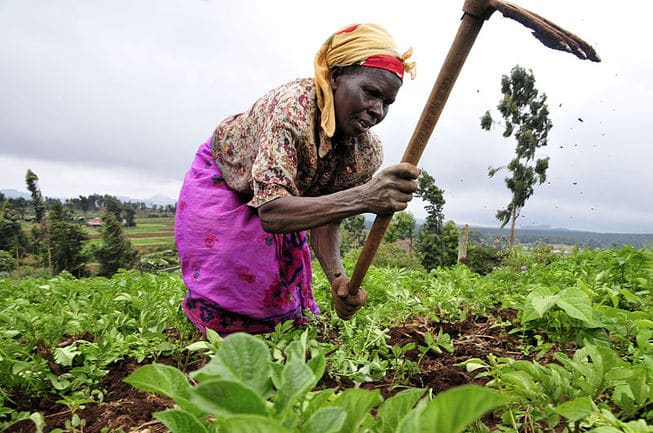De fattigste rammes hardest
FNs klimapanels siste rapport om konsekvensene av klimaendringene viser hvordan en urettferdig verden vil bli enda mer urettferdig med klimaendringer. Her er ti viktige utdrag fra rapporten.

1. De fattigste er mest sårbare for klimaendringer – “People who are socially, economically, culturally, politically, institutionally, or otherwise marginalized are especially vulnerable to climate change…This heightened vulnerability is rarely due to a single cause. Rather, it is the product of intersecting social processes that result in inequalities in socioeconomic status and income, as well as in exposure.”
2. De fattigste er allerede hardest rammet – “Climate-related hazards affect poor people’s lives directly through impacts on livelihoods, reductions in crop yields, or destruction of homes and indirectly through, for example, increased food prices and food insecurity.”
3. De fattigste er mest sårbare for ekstremvær – “Heat stress, extreme precipitation, inland and coastal flooding, landslides, air pollution, drought, and water scarcity pose risks in urban areas for people, assets, economies, and ecosystems. Risks are amplified for those lacking essential infrastructure and services or living in poor-quality housing and exposed areas.”
“Climate-change-related risks from extreme events, such as heat waves, extreme precipitation, and coastal flooding, are already moderate and high with 1°C additional warming [1.8°C above pre-industrial]. Risks are unevenly distributed and are generally greater for disadvantaged people and communities in countries at all levels of development.”
4. De fattigste er mest sårbare for redusert matsikkerhet – “Climate change has negatively affected wheat and maize yields for many regions and in the global aggregate. Whilst further climate change brings risk of food insecurity and the breakdown of food systems linked to warming, drought, flooding, and precipitation variability and extremes, particularly for poorer populations in urban and rural settings.”
5. Rurale samfunn er særlig utsatt – “Risk of loss of rural livelihoods and income due to insufficient access to drinking and irrigation water and reduced agricultural productivity, particularly for farmers and pastoralists with minimal capital in semi-arid regions.”
6. Forverret helse, særlig for de fattigste – “Until mid-century, projected climate change will impact human health mainly by exacerbating health problems that already exist. Throughout the 21st century, climate change is expected to lead to increases in ill-health in many regions and especially in developing countries with low income, as compared to a baseline without climate change.”
7. Sårbare fiskesamfunn – “Risk of loss of marine and coastal ecosystems, biodiversity, and the ecosystem goods, functions, and services they provide for coastal livelihoods, especially for fishing communities in the tropics and the Arctic.”
«Open-ocean net primary production is projected to redistribute and, by 2100, fall globally.”
8. Havnivåstigning – “Risk of death, injury, ill-health, or disrupted livelihoods in low-lying coastal zones and small island developing states and other small islands, due to storm surges, coastal flooding, and sea-level rise.»
9. Ekstrem hete – “Risk of mortality and morbidity during periods of extreme heat, particularly for vulnerable urban populations and those working outdoors in urban or rural areas.”
10. Tilbakeslag for fattigdomsbekjempelsen – “Throughout the 21st century, climate-change impacts are projected to slow down economic growth, make poverty reduction more difficult, further erode food security, and prolong existing and create new poverty traps, the latter particularly in urban areas and emerging hotspots of hunger.”